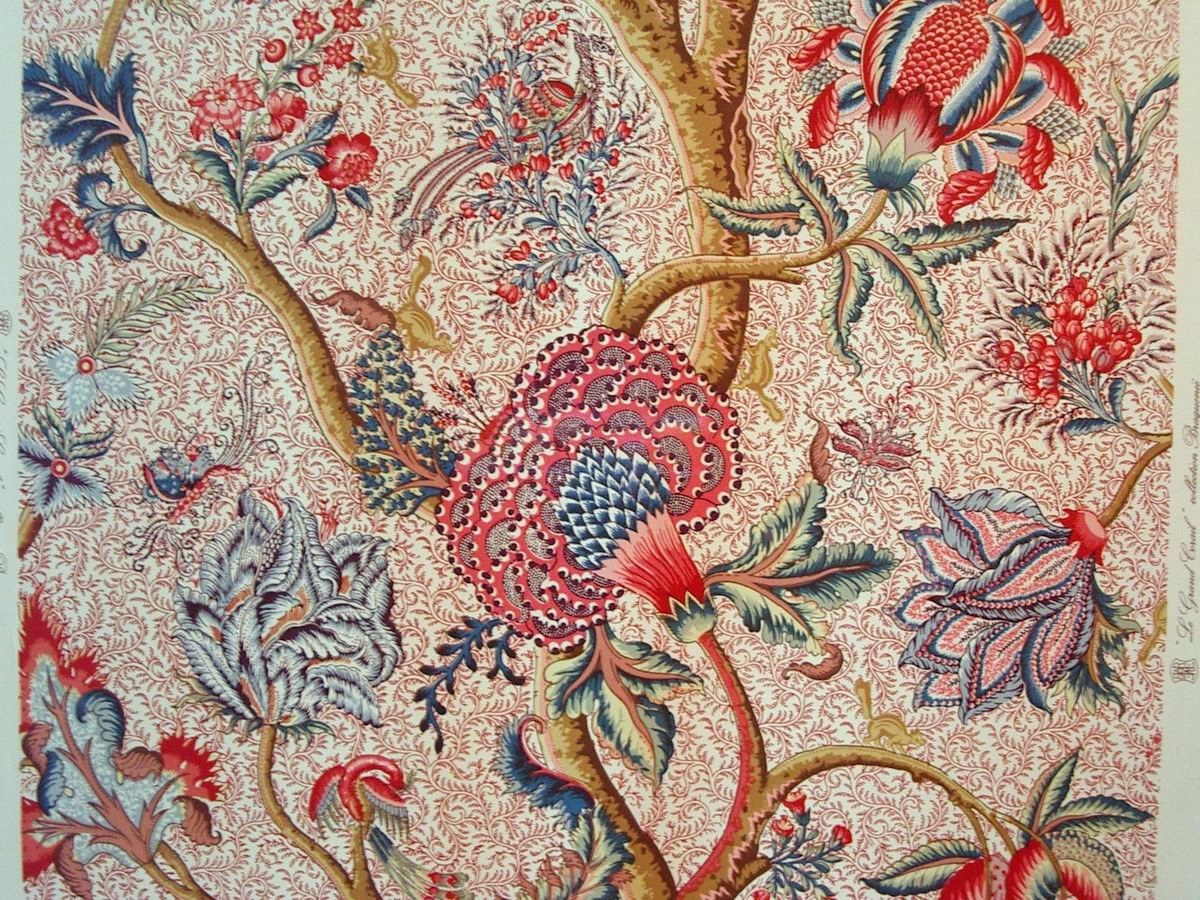Indienne on:
[Wikipedia]
[Google]
[Amazon]
 ''Indienne'' (, ; , ), was a type of printed or painted textile manufactured in Europe between the 17th and the 19th centuries, inspired by similar textile originally made in India (hence the name). They received various other names in French such as ''
''Indienne'' (, ; , ), was a type of printed or painted textile manufactured in Europe between the 17th and the 19th centuries, inspired by similar textile originally made in India (hence the name). They received various other names in French such as ''
Indienne textiles in Marseille and Provence (English)
Indienne textiles in Barcelona (English, Spanish, Catalan)
madras
Chennai (, ), formerly known as Madras ( the official name until 1996), is the capital city of Tamil Nadu, the southernmost Indian state. The largest city of the state in area and population, Chennai is located on the Coromandel Coast of th ...
'', ''pékin'' (French for Peking
}
Beijing ( ; ; ), alternatively romanized as Peking ( ), is the capital of the People's Republic of China. It is the center of power and development of the country. Beijing is the world's most populous national capital city, with over 21 ...
), ''perse'' (French for Persia
Iran, officially the Islamic Republic of Iran, and also called Persia, is a country located in Western Asia. It is bordered by Iraq and Turkey to the west, by Azerbaijan and Armenia to the northwest, by the Caspian Sea and Turkmeni ...
), ''gougouran'', ''damas'', and ''cirsacs''. The original Indian techniques for textile printing
Textile printing is the process of applying color to fabric in definite patterns or designs. In properly printed fabrics the colour is bonded with the fibre, so as to resist washing and friction. Textile printing is related to dyeing but in ...
involved long and complicated processes necessitating the use of mordants
A mordant or dye fixative is a substance used to set (i.e. bind) dyes on fabrics by forming a coordination complex with the dye, which then attaches to the fabric (or tissue). It may be used for dyeing fabrics or for intensifying stains in ...
or metallic salts to fix the dyes. The beautiful, vibrant, colors came from the garance plant for red, indigo
Indigo is a deep color close to the color wheel blue (a primary color in the RGB color space), as well as to some variants of ultramarine, based on the ancient dye of the same name. The word "indigo" comes from the Latin word ''indicum'', ...
for blue, and gaude for yellow.
''Indiennes'' were extremely popular, and attempts at import substitution were soon made. In 1640, Armenian merchants introduced Indian textile printing techniques at the port of Marseilles. Later, England (1670) and Holland (1678) would also adopt the technique.
Their importation and production in France was prohibited through a Royal French Ordinance in 1686 in order to protect the local French woolen and silk cloth industries. The ''indiennes'' continued to be produced locally despite the heavy prohibition, and were eventually legalized again in 1759. In France, the main center for the manufacture of ''indienne'' was Marseille
Marseille ( , , ; also spelled in English as Marseilles; oc, Marselha ) is the prefecture of the French department of Bouches-du-Rhône and capital of the Provence-Alpes-Côte d'Azur region. Situated in the camargue region of southern Fra ...
.
See also
*Orientalism in early modern France
Orientalism in early modern France refers to the interaction of pre-modern France with the Orient, and especially the cultural, scientific, artistic and intellectual impact of these interactions, ranging from the academic field of Oriental studies ...
External links
Indienne textiles in Marseille and Provence (English)
Indienne textiles in Barcelona (English, Spanish, Catalan)
References
{{fabric Textiles